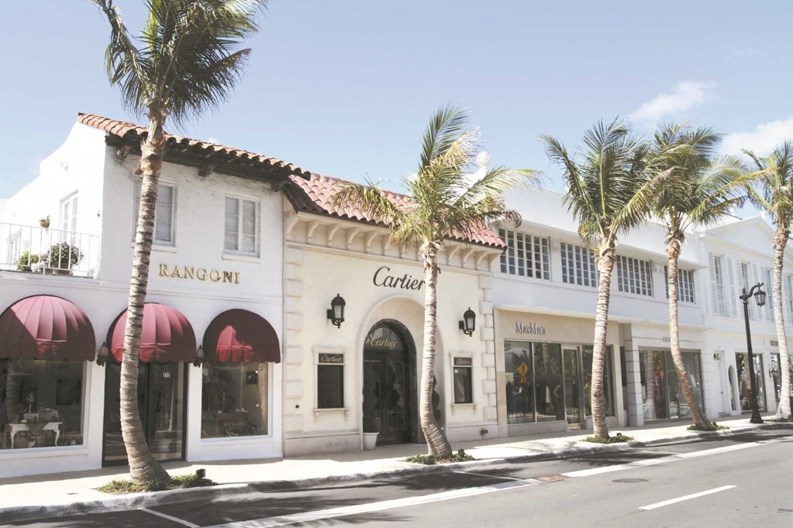Palm Beachers may have been rocked by the Bernard Madoff ponzi scheme scandal (More than a few islanders had losses in the eight figures) but the tony island, 65 miles north of Miami on Florida’s east coast still boasts, multi-million dollar mansions, mega yachts, world class dining, luxury upscale resorts, pristine beaches and some of the most expensive second-home real estate in the county.
The Intracoastal Waterway separates Palm Beach from the nearby cities of West Palm Beach and Lake Worth. The town of Palm Beach is generally referred to as Palm Beach Island or the island of Palm Beach to differentiate between the town and the county.
In 2007, CNN Money named Palm Beach one of the best places to live because of its blend of opportunity, culture, natural beauty, commerce and small town character.
Furthermore the area is home to several Fortune 500 Companies such as Office Depot and an ever expanding biotech industry because of organizations like Scripps Florida.
A Little History
Palm Beach is considered America’s first resort destination. At the turn of the century Henry Flager, an oil, real estate and railways tycoon built two opulent hotels to provide a tropical escape for well-heeled Northerners hoping to escape brutal winters. He made the Atlantic Coast barrier island accessible via his Florida East Coast Railway.
Ground was broken on The Royal Poinciana Hotel on May 1, 1893 and opened its doors on February 11, 1894. The six -story, Georgian Hotel was enlarged twice, doubling in size each time. It was the largest wooden structure in the world with 1,700 employees and accommodations for 2,000 guests. This time in American history was known as The Gilded Age, an era of rapid economic and population growth in the United States during the post-civil war and post-reconstruction eras.
Two years later the Standard Oil Company magnate opened The Palm Beach Inn on January 16, 1896 on the beachfront area of the Royal Poinciana. Shortly after guests began asking for rooms by the “breakers,” so Flager renamed the hotel the Breakers in 1901. No motorized vehicles were allowed on the property and its guests were transported between the two properties in wheeled chairs powered by employees. The property also featured a 9-hole golf course.
Henry Flager himself contracted New York architects Carrere and Hastings to build a 55-room Beaux Arts mansion for his wife, Mary Lily Kenan. The estate, to be named “Whitehall” was built around a large open-air central courtyard and was modeled after palaces in Spain and Italy with the intention of being a winter residence. Construction was completed on February 6, 1902.
Upon its completion Whitehall was exalted by the New York Herald as “more wonderful than any palace in Europe, grander and more magnificent than any other private dwelling in the world.”
The tropical climate added to Palm Beach’s appeal. The winter and months of November through April are warm and mostly dry with average high temperature of 75 to 82 degrees and lows of 57 to 66.
Other wealthy Gilded Age industrialists snapped up land along the coastline and erected stately mansions and made the area their winter playground.
The Palm Beach winter “season” was officially established and it became the rage for the rich and powerful to winter in the sun. The town was incorporated on April 17, 1911.
In 1927 architect Marion Sims Wyeth and designer Joseph Urban put the finishing touches on Marjorie Merriweather Post’s 115-room, 110,000-square-foot home Mar-A-Lago. The American socialite and founder of General Foods was known for hostessing many glamorous soirees. Post would later become America’s richest woman when her fortune reached $250 million.
Palm Beach Today
Today Palm Beach exudes opulence and glamour and continues to be a get away for the well-heeled. It remains packed with money and mansions. The upper crust residents enjoy numerous amenities such as world class golf-courses, beaches, marinas and bike paths.
Palm Beach’s concentration of wealth easily rivals the Hamptons, Aspen and Beverly Hills. Business magnate Donald Trump, radio show host Rush Limbaugh and celebrated musicians Elton John, Rod Stewart and Jimmy Buffet are known to winter in Palm Beach.
The “season” unofficially begins after Thanksgiving and ends around the spring with most of its glamorous parties and events taking place from January through March.
Worth Avenue, Palm Beach’s upscale shopping district, is often referred to as the Rodeo Drive of Florida. The street stretches four blocks and is home to over 250 boutiques such as Neiman Marcus, Hermes, Gucci and Chanel, art galleries, restaurants serving up haute cuisine and luxury hotels like the Four Seasons, The Ritz Carlton and The Breakers who all specialize in pampering by the sea.
Pricey Real Estate
Property doesn’t come cheap in Florida’s easternmost town today. According to CNN Money, oceanfront Mediterranean-style mansions start above $40 million. In 2004, Ronald O. Perelman, chairman and chief executive of Mac Andrew & Forbes, the holding company for Revlon, sold his South Ocean Boulevard home for $70 million. South Palm Beach oceanfront property can be had for just under $20 million. South Ocean Boulevard residents include Leonard A. Lauder, chairman of Estee Lauder and Koch industries heir David Koch.
Infamous ponzi schemer Bernard Madoff’s Palm Beach getaway, which boasted dense tropical plantings, sold for $5.65 million in 2010 after being on the market for one year.
Christy Smith-Sloman is a staff writer and editorial assistant for The South Florida Cooperator.




Leave a Comment